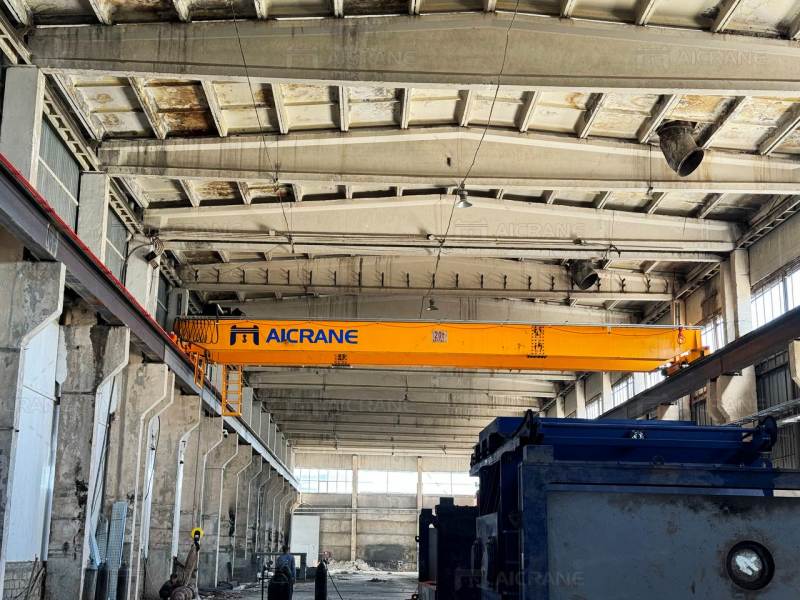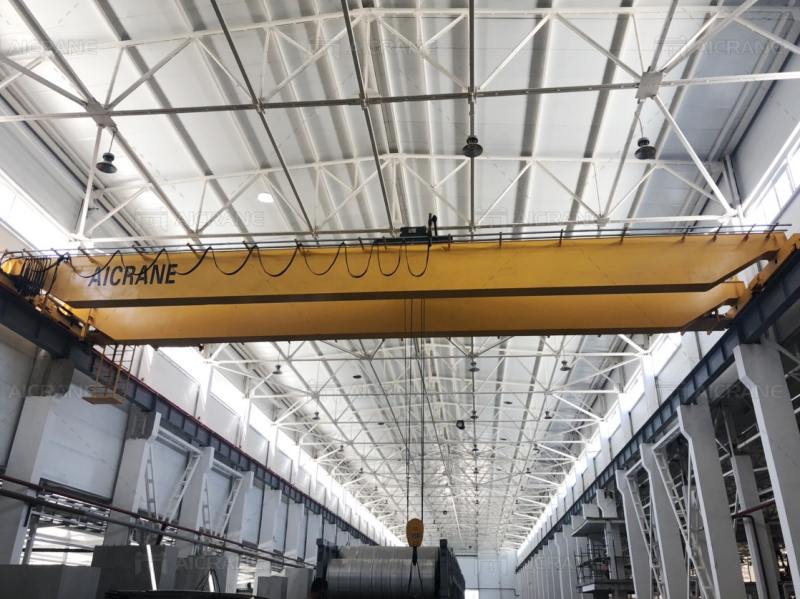In the modern industrial landscape, overhead cranes are essential for handling heavy loads in manufacturing, construction, and warehousing environments. Among the different types of overhead cranes, double girder cranes stand out for their superior load capacity, stability, and ability to handle complex lifting tasks. Not only do double girder overhead cranes enhance operational efficiency, but they also play a significant role in improving workplace safety. This article explores how double girder overhead cranes contribute to a safer and more efficient work environment.
What is a Double Girder Overhead Crane?
A double girder overhead crane features two parallel girders that support the crane’s bridge, as opposed to a single girder overhead crane, which has only one. These girders provide superior strength and stability, allowing the crane to handle heavier loads over greater spans. The design typically includes two hoists for lifting and lowering materials, which can be operated simultaneously or independently.
Double girder cranes are commonly used in heavy-duty applications, including steel mills, shipyards, and large warehouses, due to their higher lifting capacities and ability to travel across long distances. Their robustness and versatility make them a valuable tool for industries that require efficient material handling of heavy and bulky items.

Improved Safety with Double Girder Overhead Cranes
Safety is a top priority in any industrial setting, and double girder overhead cranes play a crucial role in minimizing risks and accidents.
1. Enhanced Load Stability and Control
One of the key safety benefits of a double girder overhead crane is its ability to handle heavier loads with greater stability. The double girder design distributes the weight more evenly, reducing the risk of the crane tipping or swinging uncontrollably. This increased load stability allows operators to move materials more safely, particularly in environments where precise control is essential.
Moreover, the crane’s superior lifting capacity enables the use of larger slings or spreaders, which reduces the risk of load shifts during lifting. By minimizing load instability, the likelihood of accidents caused by dropped or shifted materials is significantly reduced.
2. Reduces Overhead Hazards
In industries where overhead work is common, such as construction or manufacturing, falling materials pose a significant safety hazard. Double girder overhead cranes help mitigate this risk by offering precise control over the lifting and lowering of heavy items. This allows workers to avoid dangerous overhead situations, reducing the chances of materials falling unexpectedly and causing injury.
The increased height and reach of double girder cranes also allow for safer lifting in congested or hazardous areas, minimizing the risk of workers coming into contact with moving loads. Double girder cranes usually adopt top running crane type due to handling heavy loads.
3. Reduced Risk of Operator Fatigue
Due to the advanced features and design of double girder overhead cranes, operators can handle loads more efficiently with less physical strain. Many double girder cranes are equipped with automated or semi-automated systems, allowing the crane to perform repetitive tasks without manual intervention. This automation reduces operator fatigue, which is often a contributing factor in workplace accidents.
Additionally, the ergonomic design of modern double girder cranes, with user-friendly controls and safety features, helps operators maintain focus and reduces the potential for human error.
4. Enhanced Safety Features
Modern double girder cranes come equipped with a variety of safety features designed to protect both operators and workers. Some of these features include:
- Limit Switches: Prevent the crane from exceeding its operational limits, such as lifting beyond its rated capacity or traveling too far in either direction.
- Emergency Stop Buttons: Allow operators to stop the crane instantly in case of an emergency, reducing the risk of accidents or damage.
- Anti-collision Devices: Protect against collisions by automatically stopping or adjusting the crane’s movement if it approaches an obstruction.
- Overload Protection: Ensures the crane does not exceed its maximum load capacity, preventing equipment failure and accidents.
These safety features help reduce the risk of accidents and ensure that the crane operates within its safety parameters.

Increased Efficiency with Double Girder Overhead Cranes
In addition to improving safety, double girder overhead cranes also contribute to enhanced workplace efficiency.
1. Higher Lifting Capacity and Greater Reach
One of the main advantages of double girder overhead cranes is their ability to handle heavier loads over longer distances. This increased capacity allows companies to lift and move large, bulky materials with fewer lifts, saving time and reducing the number of cranes needed for a job.
For example, in manufacturing plants or warehouses where large shipments of materials need to be moved, a double girder crane can complete tasks faster, leading to increased productivity. This greater lifting capacity also reduces the need for auxiliary lifting equipment, streamlining operations and reducing the time spent switching between different machines.
2. Faster Lifting and Travel Speeds
Double girder overhead cranes are typically designed with more powerful motors, allowing for faster lifting and travel speeds compared to single girder cranes. The combination of increased speed and load capacity ensures that materials can be moved quickly and efficiently throughout the workspace.
Faster operation means reduced downtime, allowing for more work to be completed in less time. This is particularly beneficial in high-demand industries like manufacturing, where speed is crucial to meeting production targets.
3. Flexibility in Operations
Double girder cranes are often equipped with features that enhance operational flexibility. For example, some models can be outfitted with dual hoists, allowing for simultaneous lifting of multiple loads or different load configurations. This ability to adapt to various lifting requirements increases operational flexibility and streamlines complex tasks that would otherwise require multiple machines.
Conclusion
Double girder overhead cranes provide significant benefits in terms of both safety and efficiency. Their superior load capacity, stability, and control help prevent accidents and improve safety in environments where heavy lifting is common. Additionally, their enhanced operational efficiency allows for faster and more streamlined material handling, reducing downtime and increasing productivity.
For industries where heavy loads and large spans are required, investing in a double girder overhead crane can lead to long-term improvements in both safety standards and operational performance. With ongoing advancements in safety features and automation, the role of double girder cranes in improving workplace efficiency and safety will continue to grow, making them an essential piece of equipment for many industrial operations.
